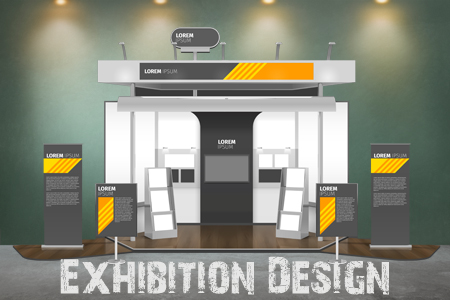Intricacies of
Exhibition Design
Published: Dec 14, 2022
Exhibition design is a multifaceted and captivating art form that blends creativity, storytelling, and technical expertise to transform spaces into immersive experiences. Whether in museums, galleries, trade shows, or public spaces, exhibition design plays a pivotal role in engaging visitors, conveying information, and evoking emotions. Here we explores the intricacies of exhibition design, shedding light on its importance, principles, and the key elements that bring these captivating displays to life.

Importance of Exhibition Design
Exhibition design serves as a bridge between the content and the audience, enriching the way information is presented and received. It is not merely about arranging objects or artworks in a space; rather, it is about crafting an impactful narrative and setting the stage for an unforgettable journey.
- Storytelling: At the core of exhibition design lies the art of storytelling. Designers weave narratives that captivate visitors, taking them on a guided tour through the subject matter. By integrating the right visuals, artifacts, interactive elements, and technology, designers can create an emotional connection between visitors and the displayed content.
- Education and Communication: Exhibitions are powerful educational tools. Effective exhibition design ensures that complex information is communicated in an accessible and engaging manner. Designers carefully consider the target audience, employing various techniques to make the content relatable and comprehensible.
Principles of Exhibition Design
Exhibition Design is guided by a set of principles that govern the creation of meaningful and coherent displays:
- Unity and Cohesion: A successful exhibition design maintains a cohesive theme throughout the display. Whether it is a historical journey or an exploration of contemporary art, all elements should harmoniously contribute to the overarching narrative.
- Flow and Navigation: Visitors should be guided seamlessly through the exhibition space. Designers consider the flow of foot traffic and strategically place information to ensure visitors encounter the content in a logical and immersive sequence.
- Balance of Space and Content: Exhibition spaces need to strike a balance between showcasing the content and allowing visitors to move freely. Empty spaces are as crucial as the exhibits themselves, providing a moment of respite and contemplation.
Key Elements of Exhibition Design
- Layout and Spatial Arrangement: The physical layout of an exhibition space significantly influences the visitor's experience. Designers plan the arrangement of exhibits, interactive areas, and pathways to create a dynamic and engaging journey.
- Lighting: Proper lighting is essential to highlight exhibits, create ambiance, and set the mood. Different lighting techniques, such as spotlights, ambient lighting, and backlighting, are used strategically to enhance the impact of displayed items.
- Graphics and Signage: Clear and concise graphics, labels, and signage play a pivotal role in providing context and information to visitors. The typography, color scheme, and visual hierarchy are carefully chosen to complement the overall design.
- Interactivity and Technology: Integrating interactive elements and technology adds an immersive layer to exhibitions. Touchscreens, augmented reality, virtual reality, and audio guides enable visitors to actively engage with the content.
Exhibition design is a fascinating blend of art and science, where creativity meets functionality to create captivating experiences for visitors. Through thoughtful storytelling, spatial arrangement, and the strategic use of elements like lighting and technology, exhibition designers transport audiences into the heart of history, art, science, and culture.
As technology continues to advance, the possibilities for exhibition design are boundless. The future will undoubtedly witness even more innovative and awe-inspiring displays, enriching the way we learn, appreciate, and connect with the world around us.